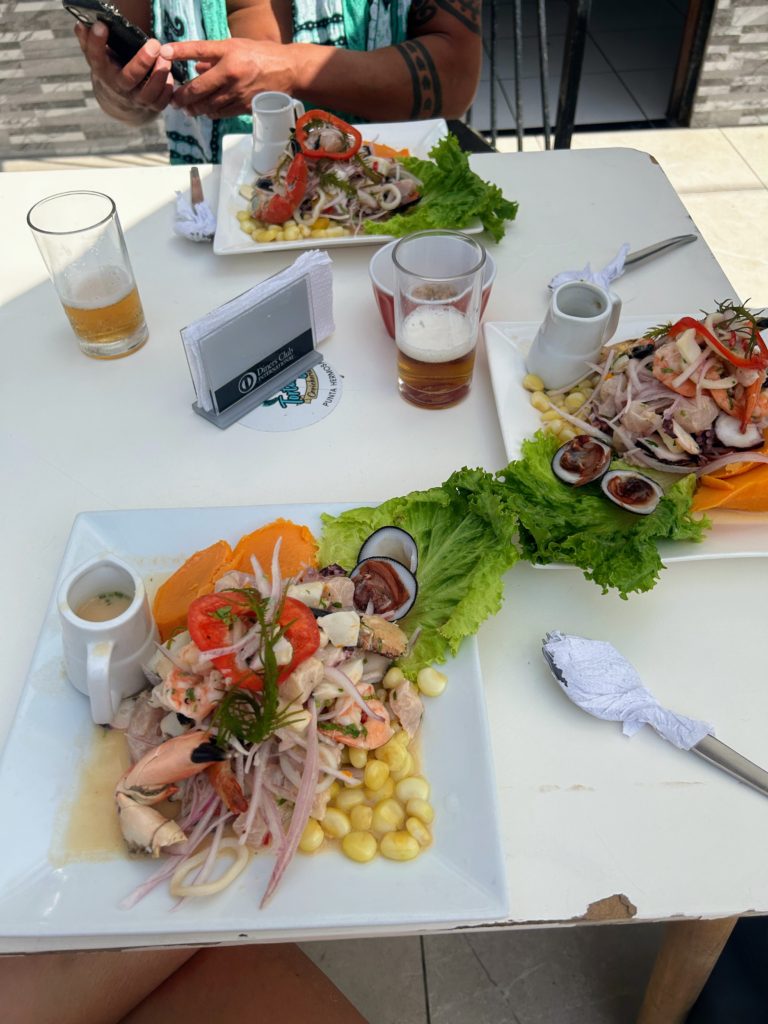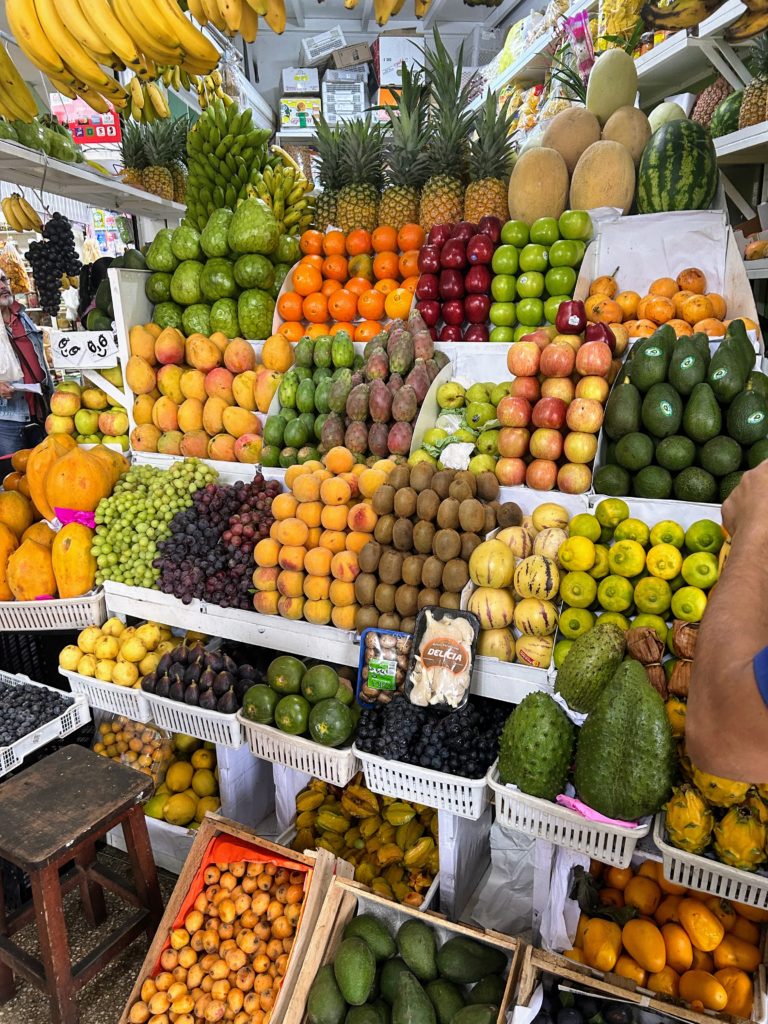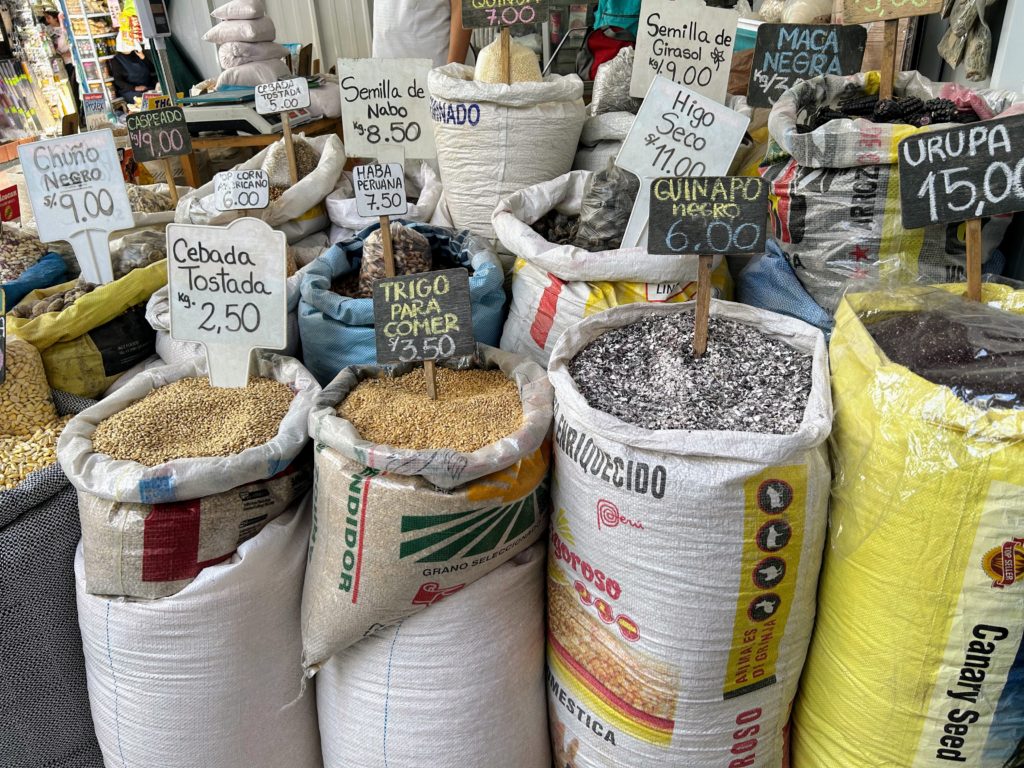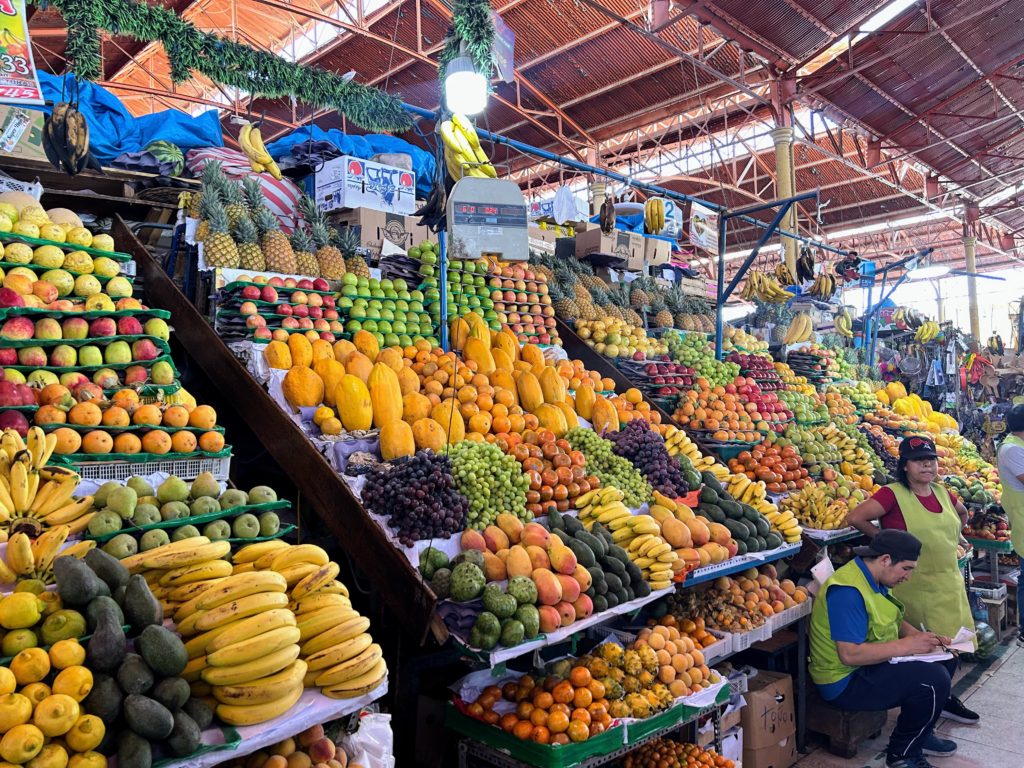Peru has a fantastic gastronomy. It is known as the top country for cuisine in South America. We think this is largely due to the Asian influence that is had on the cuisine.
Peruvian food markets are a certain type of organized chaos. Each one is separated into sections. Fruit, juices, meat, grains, and meals. They each all generally have a ring of artisan goods around them. The fruits in Peru are spectacular. Our favorites were the lucuma, a unique tasting orange fruit with the texture of a cooked sweet potato, and the cherimoya, a sweet fruit with a creamy kiwi texture. The flavours of both are hard to describe. Lucuma’s are a soft mango flavor with a bit of citrus and cinnamon. Cherimoya’s taste sweet, but a sophisticated kind.
There are four types of Peruvian restaurants, according to our guide in Arequipa. The first is the set menu type. These are common and everywhere. For 5-15 soles, you get a meal that consists of a soup, usually potato, quinoa, or chicken, and a main with rice, potato, a small salad and a protien. These restaurants are where the locals eat all the time. Each time we went to one of these the food was decent, soups especially, but the hygiene was hit or miss. We also still haven’t fully recovered our appetites after our sickness in Ecuador, so plain white rice isn’t too appealing.
The next three types of restaurants were essentially varying levels of fanciness for a dinner out. These restaurants include the more international cuisines, like a burger or sushi. We tended to eat at these restaurants more, much to the disappointment of our budget. Some highlights include Kao, a Peruvian-Thai place in Arequipa, Garhwal, Indian food in Cusco, and El Sombrero, a seafood place in Trujillo.
The influence of East Asia on Peruvian food is interesting. A whole cuisine, Nikkei, has formed out of Japanese-Peruvian fusions. One of the most popular types of restaurants is Chifa, or Chinese food. There are many set menu Chifa restaurants, as well as more upscale ones. The portions at these places are massive too. The extra fancy restaurants always include some sort of fusion. The Peruvian part seems to come from the localness of the ingredients, not the the techniques or spices used.
It is very similar to food in Ecuador but there is more money and there is more Asian influence, so I thought the food was better. There were more spices available, bigger grocery stores, and more people so the food was more diverse.
I think the most influential and iconic dish in Peru is ceviche. Regardless of how far from the coast you were, there was always an option for ceviche. The flavour is unlike anything elseIi have ever had. Very strong citrus and fresh fish. We made a version in our cooking class and it was one of my favorite dishes in Peru.
I think the most interesting dish in Peru is the Lomo Saltado. Its a Peruvian stir fry dish and its on every Peruvian menu, the local set menus, the Chifa menus, we made it with Sandro, it is everywhere. The first time we had it was in Punta Hermosa when we were surfing. It is some sort of red meat (beef, lamb, alpaca) which is stir fried with peppers, onions, tomatoes, white rice and French fries (Peruvians love their under seasoned French fries). It uses soy sauce and that’s really it. I think it a perfect representation of using some Chinese influence with some Chinese ingredients and some Peruvian ingredients.
Even though we were in the country for over a month, I still don’t know what Peruvian Cuisine is. I reminded me of how I don’t really know what Canadian cuisine is. It is such a big country’s with a large mix of people, there is international influence everywhere so you cant out your finger on it it same way you could with the smaller European countries or Ecuador.
When I asked Chef Sandro, what makes Peruvian food, he didn’t really give me a straight answer like I wanted but I think that is because there is no straight answer.
Overall, the food was great. Most things we really enjoyed. I am sad we got sick so were weren’t able to enjoy all the market food but maybe that is for the best. I would love to go back to Lima and try more of the food, especially the Michelin ones.








Sounds yummy & exotic, but what about dessert?
Dessert isn’t really a thing in this part of the world
What a great thing to have met Chef Sandro. So glad you are in culinary bliss Camryn!
Everything looks very fresh and colourful. A little Surprising but great to see.
Mark